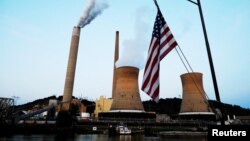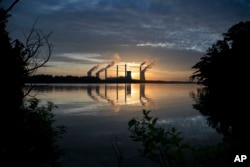After three years of decline, U.S. carbon emissions shot up last year, based on early estimates from an independent research group. The Rhodium Group routinely monitors carbon emissions and their preliminary estimates suggest U.S. output was up 3.4 percent in 2018.
This is the largest annual increase since 2010, when the nation was bouncing back from a financial crisis known as Great Recession.
The research also suggests that despite the Trump administration's efforts to revive the coal industry, it continues to decline in the face of cheap and plentiful natural gas.
Bad news for coal
According to the Rhodium report, coal-fired plants generating 11.2 gigawatts of power had closed by October of last year, with more scheduled for closure over the following months. While the numbers are still preliminary, if they pan out, that would make 2018 the biggest coal plant closure year on record.
Far and away, natural gas is now the energy of choice in the U.S. with an increase of 166 million kilowatts per hour through October.
U.S. power consumption - and carbon emissions - increased in 2018. But the transportation sector of the economy contributed the most to the nation's record emissions. The good news is that gasoline demand is down modestly, as the hybrid and electric car industry have begun to make a small dent in the demand for gasoline. But increases in the demand for diesel and jet fuel still made transportation the biggest source of carbon emissions throughout the U.S.
Another big source of emissions that often doesn't get noticed, according to the report, is in the building sector of the economy. Emissions from buildings and homes was way up, due in part to an exceptionally cold winter in parts of the U.S. last year.
The Paris question
2018 is an anomaly because each year, since 2015, U.S. carbon emissions had been decreasing, if modestly, as the nation worked to reach its commitments to the Paris Climate Agreement. U.S emissions declined by 2.7 percent in 2015, 1.7 percent in 2016, and 0.8 percent in 2017. But even with those reductions, the U.S. was already off track to meet reductions agreed to by the Obama administration.
The U.S. joined almost 200 other countries to sign the agreement in 2015. Under the deal, the U.S. committed to cutting its carbon emissions by at least 26 percent from 2005 levels by 2025.
But the Trump administration announced its intention to pull the U.S. out of the deal this year, and will formally exit the global compact in 2020.







